This time of year, my family enjoys taking a weekend snowshoeing and cross-country skiing outing in the Idaho mountains to the north of our home. There is much to recommend this adventure: breathtaking scenery, great exercise and the peace of gliding amongst ponderosa pines at dusk.
However, wildlife sightings can be particularly hard to come by. With deep snow and frigid temperatures, the Rocky Mountains are not particularly hospitable in winter. Many species migrate to lower elevations or warmer climes. Others hibernate or become inactive. The species that do stick around are often difficult to spot.
A notable exception is the pileated woodpecker, one of our most frequently spotted species on these outings. Pileated woodpeckers are big, striking and entertaining to watch. With a range covering many habitats across the United States and Canada, you may be able to make your own observations near your home.
Pileated woodpeckers are notably elusive birds. Despite their size, in the spring I often only see their distinctive wing flaps as they fly away from me. In the winter, though, I’ve found that you can often get quite close and observe them undisturbed.
What you will notice first, of course, is their legendary wood pecking. Their large, strong bill serves as a powerful chisel on dead trees. The pileated woodpecker will eat a variety of foods, including seeds and a number of insects, but carpenter ants make up their primary diet. (The Cornell Lab of Ornithology reports that the diets of some studied pileated woodpeckers are made up of 98 percent carpenter ants).
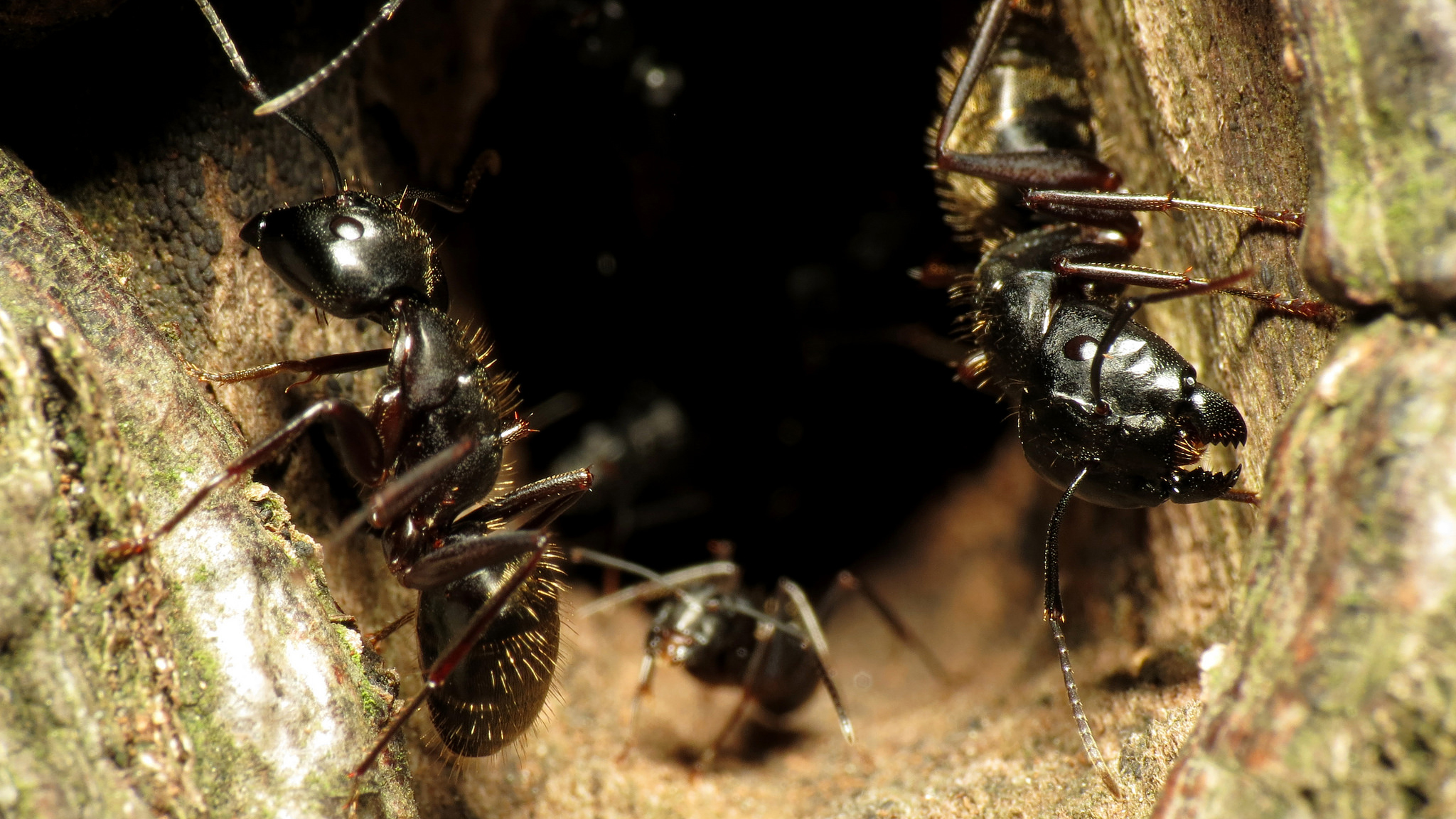
The woodpeckers go to great lengths to extract these ants. They pound out large, square holes in soft, dead wood. According to the Cornell, they use their barbed tongues to extract their prey from deep in the hole. Dead trees with abundant ant populations are foraged repeatedly by the woodpeckers. You can often see a tree full of holes from a distance (especially in winter) and piles of woodchips will pile up on the snow.
Stake out such a tree and you’re almost certain to see a pileated.
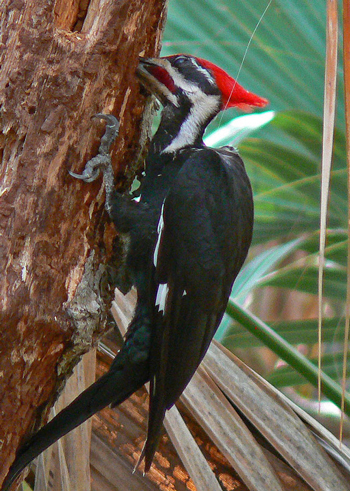
I love how deep snow muffles sound in the forest. But a woodpecker’s rat-tat-tatting still carries. The pileated woodpecker also has a very distinctive call, one that sounds like it would be more at home in a Hollywood movie set in the Amazon than in the local woodlot. In late winter (and other times of year), the male will often “drum” on a tree to mark territory.
Why are pileated woodpeckers so noticeable on a Rocky Mountain winter day? It’s quite simple: they don’t migrate. The species is highly territorial and a monogamous pair inhabits and defends a territory year round. When a member of the pair dies, a new woodpecker can move in and become mates with the surviving member.
The pair’s territory can be 150 to 200 acres. You may find, as I do, that you find pileated woodpeckers in basically the same spots each year. If a dead tree is still standing, you will probably find the same pair foraging there.
Ornithologist Joe Smith wrote previously on Cool Green Science how some bird species huddle together in large masses to stay warm on a cold winter’s night. (There is a report of more than 100 pygmy nuthatches piling into a hole in a dead pine tree on a particularly cold night). Pileated woodpeckers are the opposite: in the winter, each woodpecker excavates its own hole and roosts by itself. The male woodpecker often uses the same hole used for nesting; the young birds have already dispersed by winter.
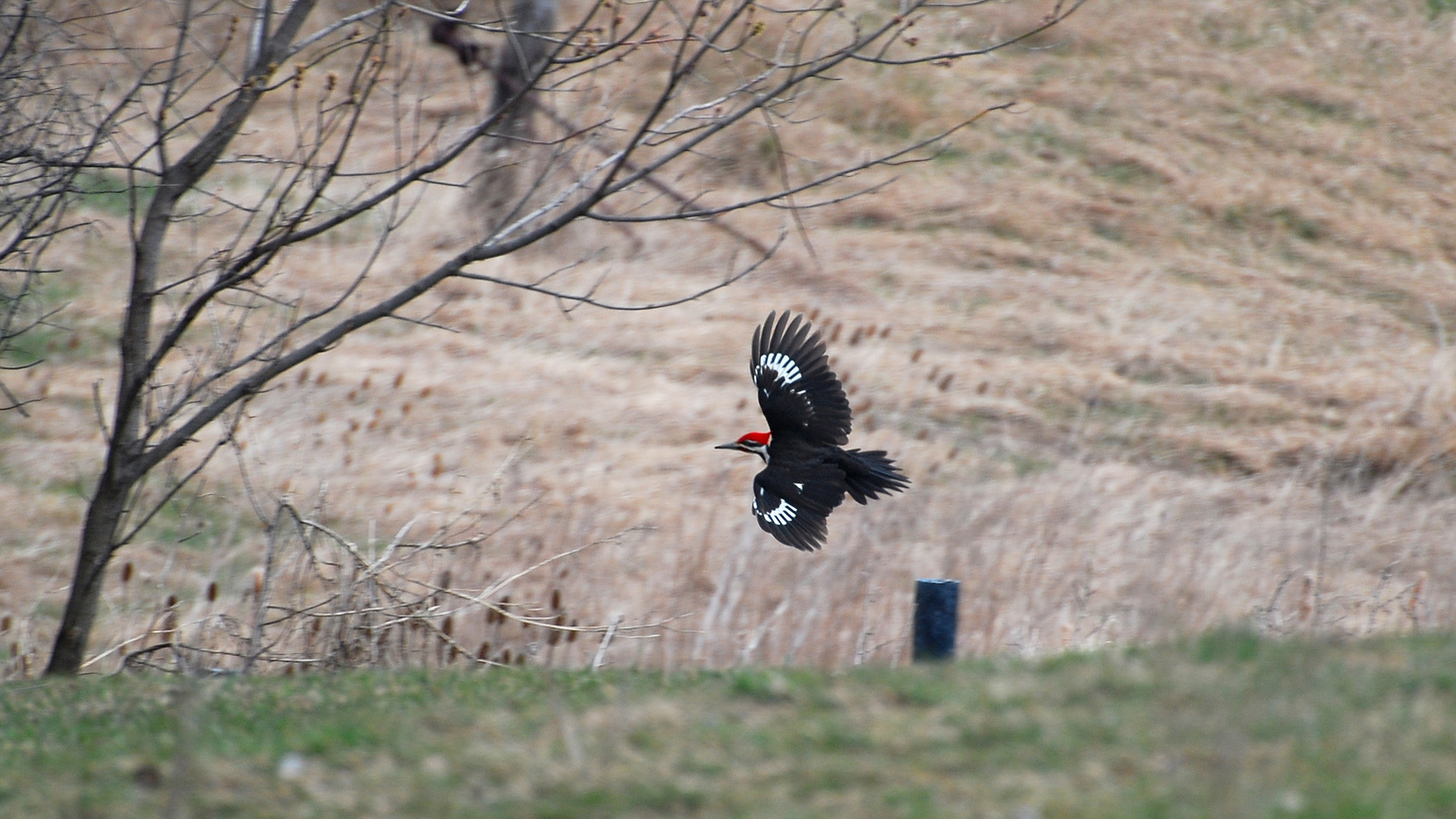
The pileated woodpecker is an important species in many different forest ecosystems. Their extensive holes become homes and shelter for a variety of species, from wood ducks to American martens. Their loud foraging attracts other birds to share in the bounty.
Pileated woodpeckers have actually increased in population since 1966, according to Cornell. The biggest thing we can do to ensure their continued prosperity is this: keep some dead trees in the forest.
Dead trees are sometimes considered unsightly or dangerous, but they’re vital to a variety of wildlife. Pileated woodpeckers forage on standing dead trees, fallen trees and stumps. Private landowners, preserve managers and timber companies can all leave a few dead trees for the birds.
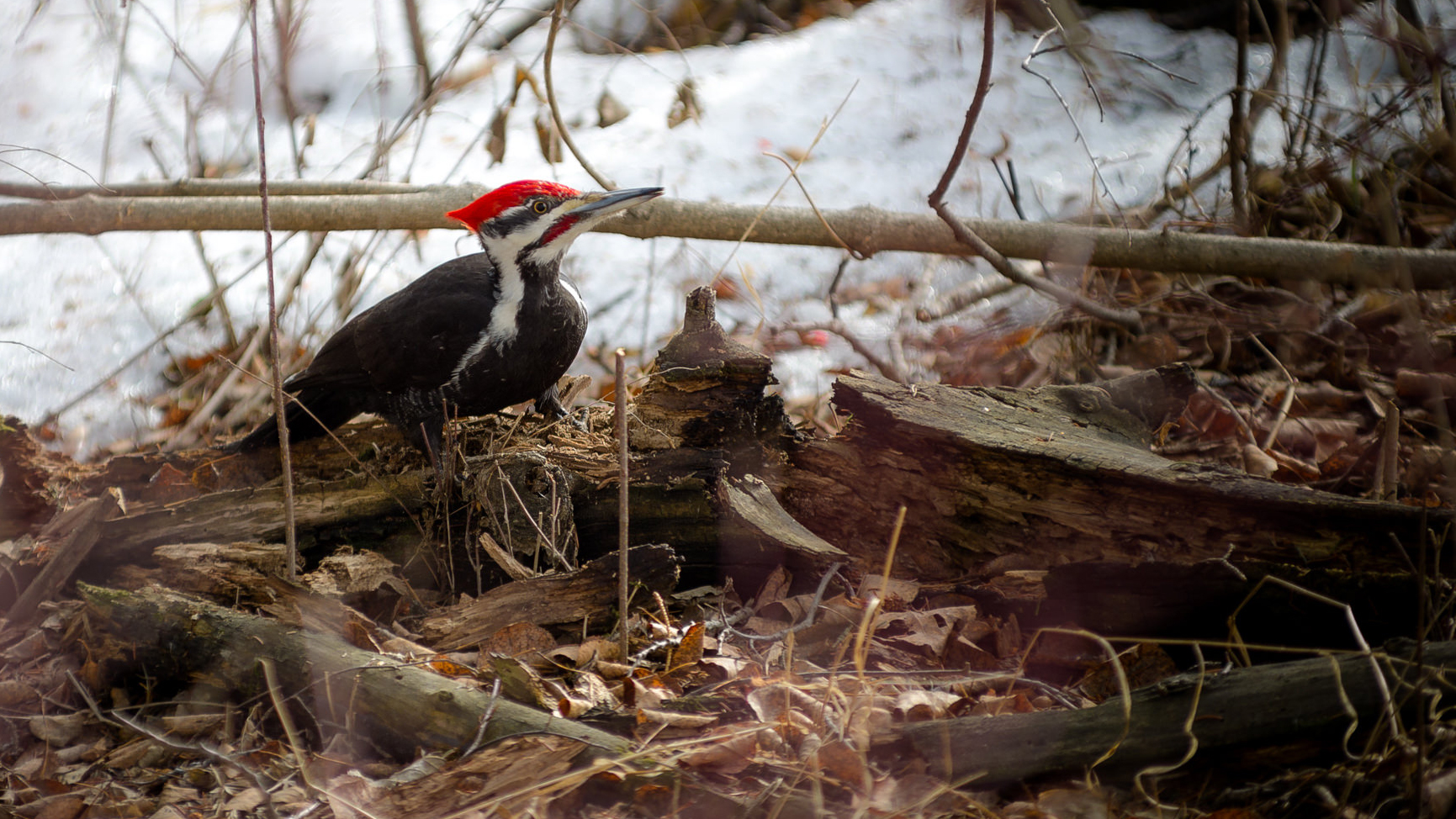
Dead trees were part of The Nature Conservancy’s forest conservation planning in North Idaho, and I saw these dead trees even on industrial timber land. And without fail, those trees would be pocked with holes from woodpeckers.
Pileated woodpeckers are found in a variety of forest habitats in North America, not just the ponderosa pine ecosystem of the Rockies. Get out there, listen and observe. The pileated woodpecker is elusive and spectacular, but the great news is it is still very common in forests and woodlots.
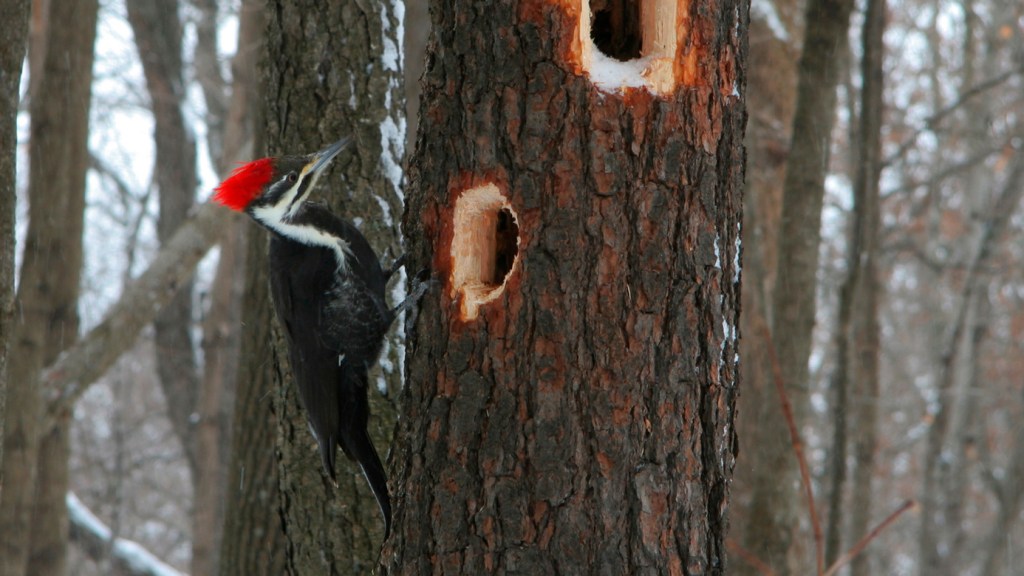



I read your article on blog.nature.org . It was so interesting. I live in a forest in Ohio. I feed the birds on my front porch. I have noticed that I haven’t seen our pileated woodpecker since middle of summer. Do you know of any reason for this happening. I thought if our pileated woodpecker went to another woods to live with its mate, that will cause ours to have none in our woods. Does that sound logical? What can I do to attract them here again?
I have these fabulous birds year round up on my deck … I talk to them right through the screen door… They are amazing, oh and i have lots of pics. one thing, their red crown fluffs up when they are excited or warning of their presence . They warn my red squirrels all the time.
I’ve got a a loyal female Pileated who has begun foraging the unfortunately sickly woods that remain around our Burlington, VT. I know they’re quite territorial…Should I expect to only see this one female or, if she had a mate, would I see both her and a mate?
I put suet on the dead trees surrounding my home. You think this practice is ok for the healthy trees nearby?
Thank you for all you do for our Earth!
WOW! Update…another one has joined the first. A nest, perhaps?
Today a Pileated Woodpecker has started his drumming in the tree line at our home at the edge of the village in Walton, New York. We have enjoyed watching them peck the dead trees around town. This is such a thrill to have one in our backyard! Hopefully this beautiful creature will continue its mission and stay near.
Can a pileated woodpecker freeze to death or die of starvation? I found one dead today and he was only about 50 feet from his hollow.